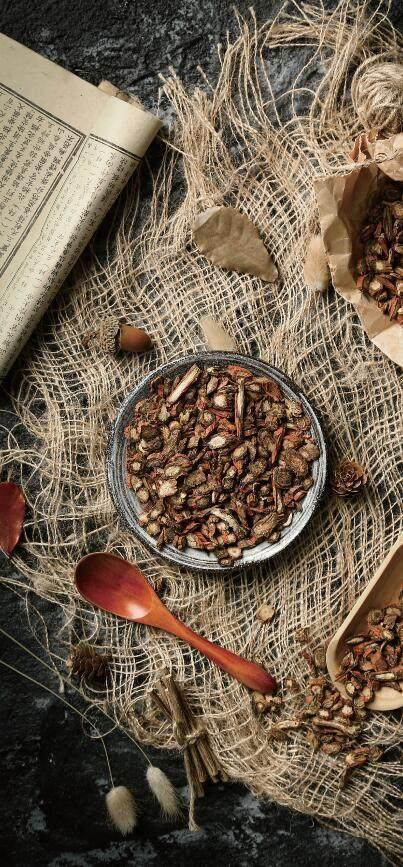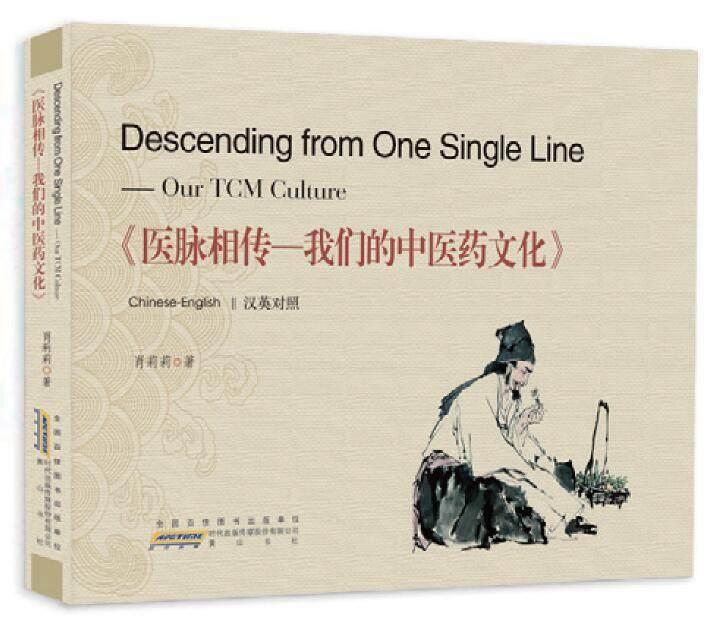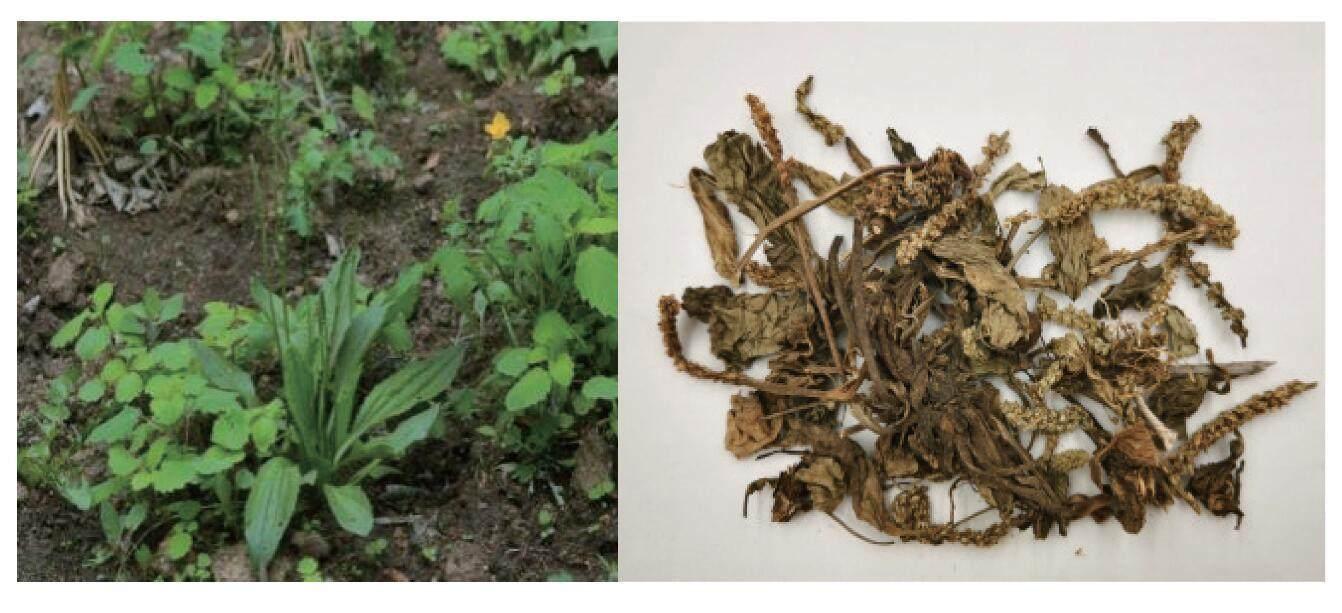Legends of Chinese Materia Medica
2024-05-14



There is a wide coverage in this book, ranging from the history of Traditional Chinese Medicine (TCM) to TCM fighting epidemics with thousands of years of history, standing out every notable landmark in the progress of TCM and unfolding every true hallmark of change in each stage, which provides a multi-faceted framework of TCM. It not only thoroughly explores fundamental theories and four diagnostic methods in TCM, but also probes into great classics of TCM and the stories of renowned TCM doctors throughout history.
Descending from One Single Line — Our TCM Culture
Xiao Lili
Huangshan Publishing House
October 2021
55.00 (CNY)
Xiao Lili
Xiao Lili, post-graduate from Beijing Normal University and lecturer at the School of Foreign Languages, Henan University of Chinese Medicine, is mainly engaged in research related to the English translation of TCM and the international transmission of TCM culture.
TCM is a label which has a wide coverage of traditional medicinal practices.
Chinese Materia medica, along with acupuncture and moxibustion, tuina (massage), food therapy, qigong, cupping, guasha (scraping) and many other different practices and therapies, make up Traditional Chinese Medicine (TCM). As stated in the Su Wen, “Sages adopt a broad repertoire of methods to treat diseases, yet the most suitable one is the best.” A key component of TCM is Chinese materia medica, which is composed mainly of plants, animal, and mineral ingredients. Among these ingredients, the most commonly used plants account for the majority of TCM treatments. Hence in ancient times, Chinese materia medica was also known as “Chinese herbal medicine” or “medical herbs.”
Plantain
According to legend, during the Han Dynasty (202 BCE–220 CE), the famous general Ma Wu led his army to conquer the Qiang people in the Wuling area.
Since they were unfamiliar with the terrain, general Ma Wu lost the battle and was besieged in an untraversed region. It was high-summer and the area suffered from a severe drought. The soldiers could see no way out of the situation, for they found neither food nor water. The soldiers and the horses all had hematuria due to a water shortage. Even worse, there was no herb which could reduce heat and excrete water nearby. The soldiers were all laden with anxiety. At this time, a groom named Zhang Yong discovered that three horses which had developed hematuria achieved spontaneous healing. Out of curiosity, he decided to find out the truth. Upon closer inspection he discovered that some pig-ear- like grass on the ground had been eaten by the three horses.
Zhang Yong decided to test the efficacy of the herb in person. It turned out to be that the grass really was a lifesaver. So, he told the general this good news immediately. The general asked with overwhelming joy, “Where is the grass?” Zhang Yong pointed his finger at the carriage and said, “Its over there, just in front of the carriage.” The general laughed heartily and said: “This really is help from heaven! A magic grass in front of the carriage, indeed!” He ordered the whole army to eat the grass right away. Sure enough, there was hope for a cure. Since then, the name of plantain began to spread.
Being sweet and slightly cold, plantain has the main efficacies of promoting urination, relieving stranguria, excreting dampness, stopping diarrhea, clearing away inflammation of the liver to brighten the eyes and reducing phlegm.
Dioscoreae Nipponicae
Long ago, many people who lived near Changbai Mountain suffered from a strange disease which caused pain in the waist and legs at first, and then gradually developed into being confined to bed. This illness would mean a harsh and miserable time.
Although Changbai Mountain covered a vast area, there was only one herbal medicine shop in this area run by an old man and his young daughter Chu Xia.
The highly skilled and kind-hearted old man always helped the poor without any medical fees. So, the local people looked up to him as an “old Chinese medicine practitioner.” His little girl also knew how to practice medicine and often went to collect herbs with her father.
The old Chinese medicine practitioner was constantly gnawed by the strange disease for he failed to find the cure for it. The patients were hit time and time again
by the ineffective treatment. Though each time it seemed hopeful, the results were always disappointing. Chu Xia could understand her fathers innermost feelings, and she was determined to think of ways to heal them.
One day, she headed to Long Tan (Dragon Pond) to collect herbs with a bamboo basket which contained a sickle and some food. It was said by the old men that Long Tan was extremely dangerous and there were many wild animals, especially a monster called “Hei Long Jing (Black Dragon Essence).” Many hunters dared not take the risks of going to Long Tan. However, Chu Xia thought that she could definitely find some rare herbs to cure this disease, and so she carried out her adventure without any hesitation.
Chu Xia came across mountains and waded through rivers, and finally arrived at Long Tan. She first built a straw hut by the side of the mountain, settled down, and then, with a bamboo basket on her back, immediately climbed the mountain to seek herbs without any delay. She tried many herbs, but could not find the right one. Feeling sad, she went back to her straw hut. When the plight of her folks and the anxious looks of her father rose before her, she cried with grief.
Then she fell in sleep in tears. A young man in black came to her in a dream. She was surprised and asked, “Who are you? What do you want?”
The young man bowed and said politely, “I admire your bravery, and intend to lend you a hand to find the herb which can cure the disease.”
“I dont know what to do next. I have searched every corner of Long Tan, none of the herbs are useful.”
“Dont worry. You just stay in the straw hut. When daybreak comes,
go out of the straw hut to dig the root of the grass with the black dragon scales.”
With these words, the young man left. It was dark in a blink of an eye. The lightning flashed and the thunder rumbled. It was about to rain. The girl woke up and looked outside. It was just like in her dream. She went out and saw a little black dragon in the sky which was striking itself against the hills. With every collision, lots of dragon scales fell down. The girl burst into tears and went back to the straw hut, for she could not bear to see this anymore. After a while, when the new day came, Chu Xia walked out of the straw hut and found some dragon-scale-like grass outside. She realized that this was the grass that the young man in black had mentioned, and they were the scales that the young man gave her. She was deeply moved. In tears, she dug many grass roots and went back.
After Chu Xia came back, her father used these grass roots to make the herbal soup, which was quite effective to the strange disease. Chu Xia told her story in Long Tan to her folks, and they were very grateful. The grass Chu Xia had brought
back had exuberant vitality and grew in strings. In order to memorize the black dragon, people called this grass with the dragon-like roots and the dragon scale
like leaves “Chuan Shan Long” (Dioscoreae Nipponicae).
The main medicinal virtues of dioscoreae nipponicae, which is bitter in taste and slightly cold in property, are expelling wind-dampness, activating blood circulation, removing obstruction in collaterals, clearing away heat from the lungs and dissolving phlegm. It is often used for the treatment of rheumatic arthralgia and coughing with asthma due to phlegm and heat in the lungs.
杂志排行
中国新书(英文版)的其它文章
- Dujiangyan
- Traditional Chinese Crafts in the Context of Silk Road Civilization -- Interview with Master Li Maodi, a Master of Zhuoni Tao Inkstone Making in Gansu’s Zhuoni
- Encounters and Cultural Boundaries Between East and West: Cultural Transmission Under the Belt and Road Initiative
- The Splendor of the Maritime Silk Road: A Major Theme of Globalization Leading to the Americas
- Revelations from the Civilizations of the Silk Road
- The Historical Context of the Silk Road
